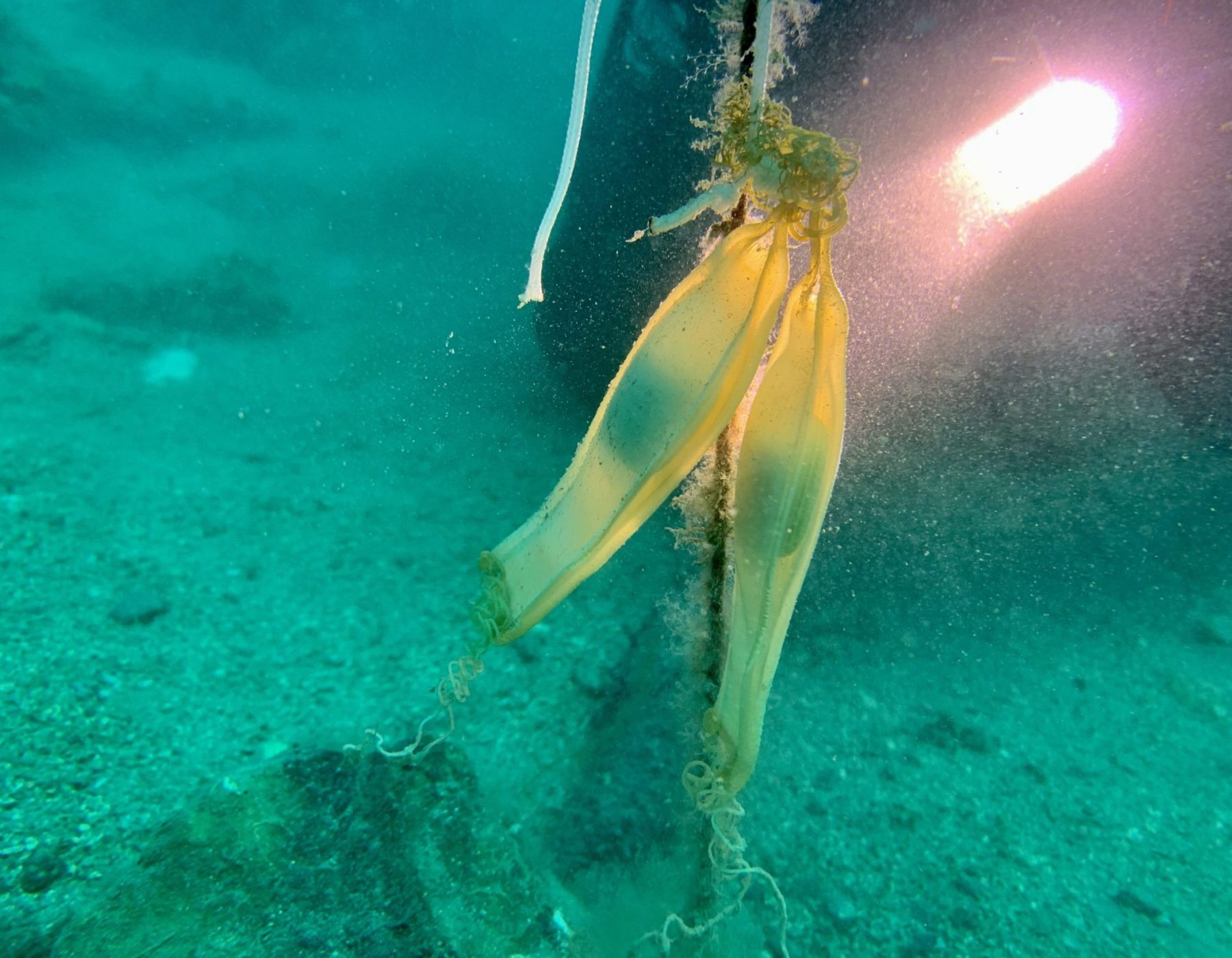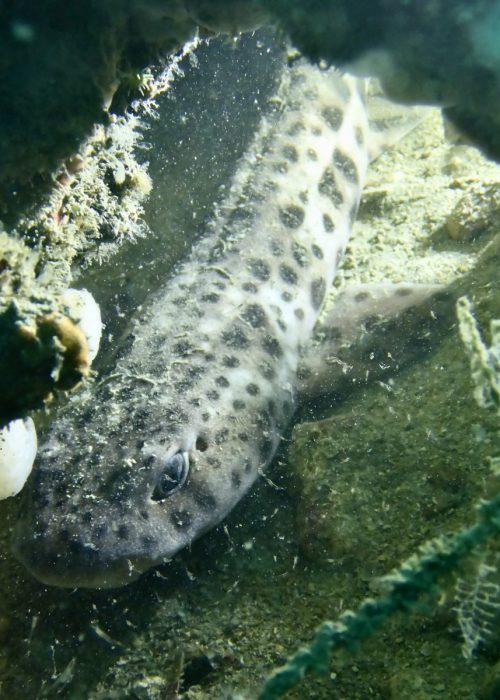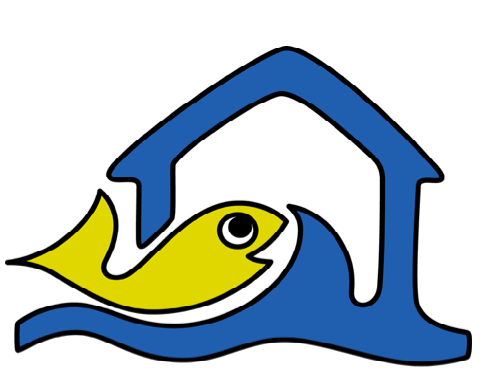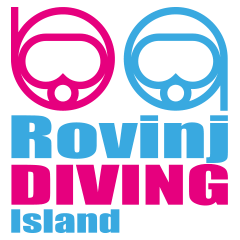We have been committed to preserving and rebuilding the catshark population on the Red Island since 2020. Back then, the whole thing started as a university project involving four universities from all over Europe. As part of this, our entire bay was mapped, measured and the perfect place for egg breeding was defined.

But why are catsharks so special?
They owe their name to their cat-like eyes. Their body shape suggests that they tend to stay close to the bottom, which is why they are also known as bottom sharks. When you hear the word “shark”, some people think of the terms “big” and “dangerous”, but we can reassure you that cat sharks usually don’t even grow to a meter in size and their diet is based on smaller creatures such as annelids (e.g. tube worms), crustaceans, cephalopods (e.g. squid) and echinoderms (e.g. starfish). There are usually 3 species of catshark in the Mediterranean: the Duhamel’s catshark (Scyliorhinus duhamelii), the small-spotted catshark (Scyliorhinus canicula) and the large-spotted catshark (Scyliorhinus stellaris).
How do we know that there are different species of catshark?
The different species can be identified on the basis of their different body and head shapes, their size and also their color and markings.
The development of catsharks
In spring, female catsharks lay their eggs and attach them to underwater structures such as rocks or corals. It then takes around 6-12 months for a young catshark to hatch from the egg. If you discover a shark clutch, you can try to shine a flashlight through the eggs. If you are lucky, you may be able to see an embryo, and it may even move.
What are the challenges for catsharks and why should they be protected?
Overfishing and the loss of their habitat are particularly stressful for cat shark populations. Another major problem is the heavy development of the coasts and the construction of pipes on the seabed. This is because construction work leads to vibrations and destruction, which causes fauna and flora to suffer and make it very difficult for them to recover from this damage. Sharks are the garbage collectors of our oceans, they clean it of dead animals and thus maintain the balance in the sea. We should therefore be happy to have these animals in our world, regardless of whether they are large or small shark species.
Because of our love for sharks, we have decided to counteract the extinction of the species by releasing cat sharks in our bay in cooperation with Aquarium Pula. Over the next few years, we will monitor the number of hatched eggs and document how they develop. Of course, we want you to be there too, so from this year we are offering a catshark diving package:
- One hour of theory about catsharks incl. briefing (biology, breeding, etc.)
- 3 deep dives
- We will search various dive sites for cat sharks with you, which will be a real “shark light”. These dives will definitely find a special place in your logbook and in your heart.
You can either book this package with us by e-mail or contact us on our WhatsApp number!
We look forward to seeing you!

Unsere Partner:






